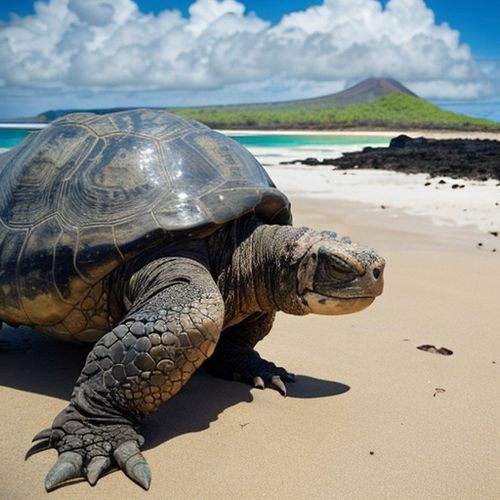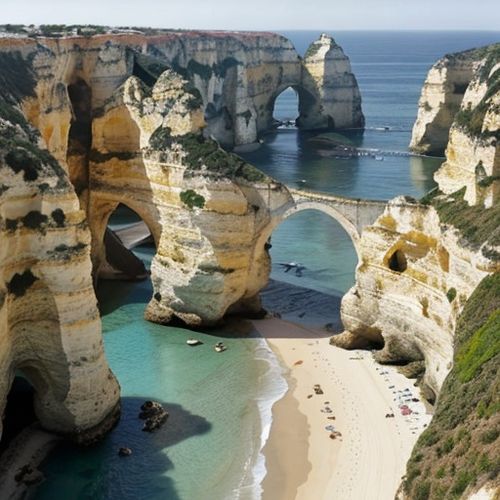The Galápagos Islands, a UNESCO World Heritage site renowned for their unique biodiversity, have long been a magnet for eco-conscious travelers. However, the increasing influx of tourists has raised concerns about the environmental impact of travel to this fragile ecosystem. In response, local authorities and conservationists are pioneering a groundbreaking initiative to monitor and mitigate the carbon footprint of visitors. This effort aims to balance tourism with preservation, ensuring that the islands remain a sanctuary for endemic species like the giant tortoise and marine iguana.
The Carbon Footprint Challenge
Tourism in the Galápagos has surged in recent decades, with over 275,000 visitors annually. While tourism fuels the local economy, it also contributes significantly to carbon emissions through air travel, cruise ships, and on-island activities. The remoteness of the archipelago exacerbates the problem, as nearly all visitors arrive by plane or boat, both of which are carbon-intensive modes of transport. The delicate balance of the islands' ecosystems makes them particularly vulnerable to the effects of climate change, prompting calls for urgent action.
Recognizing this, the Galápagos National Park Directorate, in collaboration with environmental organizations, has launched a comprehensive carbon footprint monitoring program. The initiative tracks emissions from every stage of a visitor's journey, from international flights to local transportation and accommodation. The data collected will inform policies aimed at reducing the overall environmental impact of tourism while maintaining its economic benefits.
How the Monitoring System Works
The carbon footprint monitoring system relies on a combination of technology and visitor participation. Upon arrival, tourists are required to register their travel details, including flight itineraries and accommodation bookings. This information is fed into a centralized platform that calculates the carbon emissions associated with each visitor's stay. Advanced algorithms account for variables such as flight distance, aircraft type, and even the energy efficiency of hotels.
Visitors receive a personalized report detailing their carbon footprint, along with suggestions for offsetting it. Options include contributing to reforestation projects, supporting renewable energy initiatives, or participating in local conservation programs. The goal is not to discourage tourism but to foster a culture of accountability and sustainability among travelers.
The Role of Local Communities
Local communities are integral to the success of this initiative. Many residents have embraced the program, recognizing that their livelihoods depend on the long-term health of the islands' ecosystems. Tour operators, hoteliers, and restaurants are increasingly adopting sustainable practices, such as using solar energy, reducing plastic waste, and sourcing food locally. These efforts not only lower carbon emissions but also enhance the authenticity of the visitor experience.
Educational campaigns targeting both tourists and locals emphasize the importance of minimizing environmental impact. Workshops and guided tours highlight the fragility of the Galápagos ecosystem and the role each individual plays in its preservation. By fostering a sense of shared responsibility, the program aims to create a model for sustainable tourism that can be replicated elsewhere.
Challenges and Future Steps
Despite its promise, the carbon footprint monitoring program faces significant challenges. Accurate data collection relies on visitor cooperation, which can be inconsistent. Some tourists may be reluctant to share detailed travel information, while others might view carbon offsetting as an unnecessary expense. Ensuring compliance without deterring visitors requires a delicate balance.
Looking ahead, authorities plan to integrate more advanced technologies, such as blockchain, to enhance transparency and trust in the offsetting process. Partnerships with international airlines and cruise lines are also being explored to streamline data collection and expand offsetting options. The ultimate vision is to make the Galápagos a carbon-neutral destination, setting a global benchmark for sustainable tourism.
A Global Example
The Galápagos Islands' initiative is more than a local effort; it is a test case for the future of eco-tourism worldwide. As climate change accelerates, destinations famed for their natural beauty must find ways to protect their resources without excluding visitors. The lessons learned here could inspire similar programs in other vulnerable ecosystems, from the Amazon rainforest to the Great Barrier Reef.
For now, the Galápagos stands as a beacon of innovation, proving that even the most remote and fragile places can lead the charge in environmental stewardship. By holding both visitors and locals accountable for their carbon footprint, the islands are charting a course toward a more sustainable future—one where tourism and conservation go hand in hand.

By Megan Clark/Apr 11, 2025

By John Smith/Apr 11, 2025

By James Moore/Apr 11, 2025

By Victoria Gonzalez/Apr 11, 2025

By John Smith/Apr 11, 2025

By Rebecca Stewart/Apr 11, 2025

By Megan Clark/Apr 11, 2025

By John Smith/Apr 11, 2025

By Ryan Martin/Apr 11, 2025

By Samuel Cooper/Apr 11, 2025

By Emily Johnson/Apr 11, 2025

By James Moore/Apr 11, 2025

By David Anderson/Apr 11, 2025

By Ryan Martin/Apr 11, 2025

By William Miller/Apr 11, 2025

By George Bailey/Apr 11, 2025

By Daniel Scott/Apr 11, 2025

By Sophia Lewis/Apr 11, 2025

By Megan Clark/Apr 11, 2025

By David Anderson/Apr 11, 2025